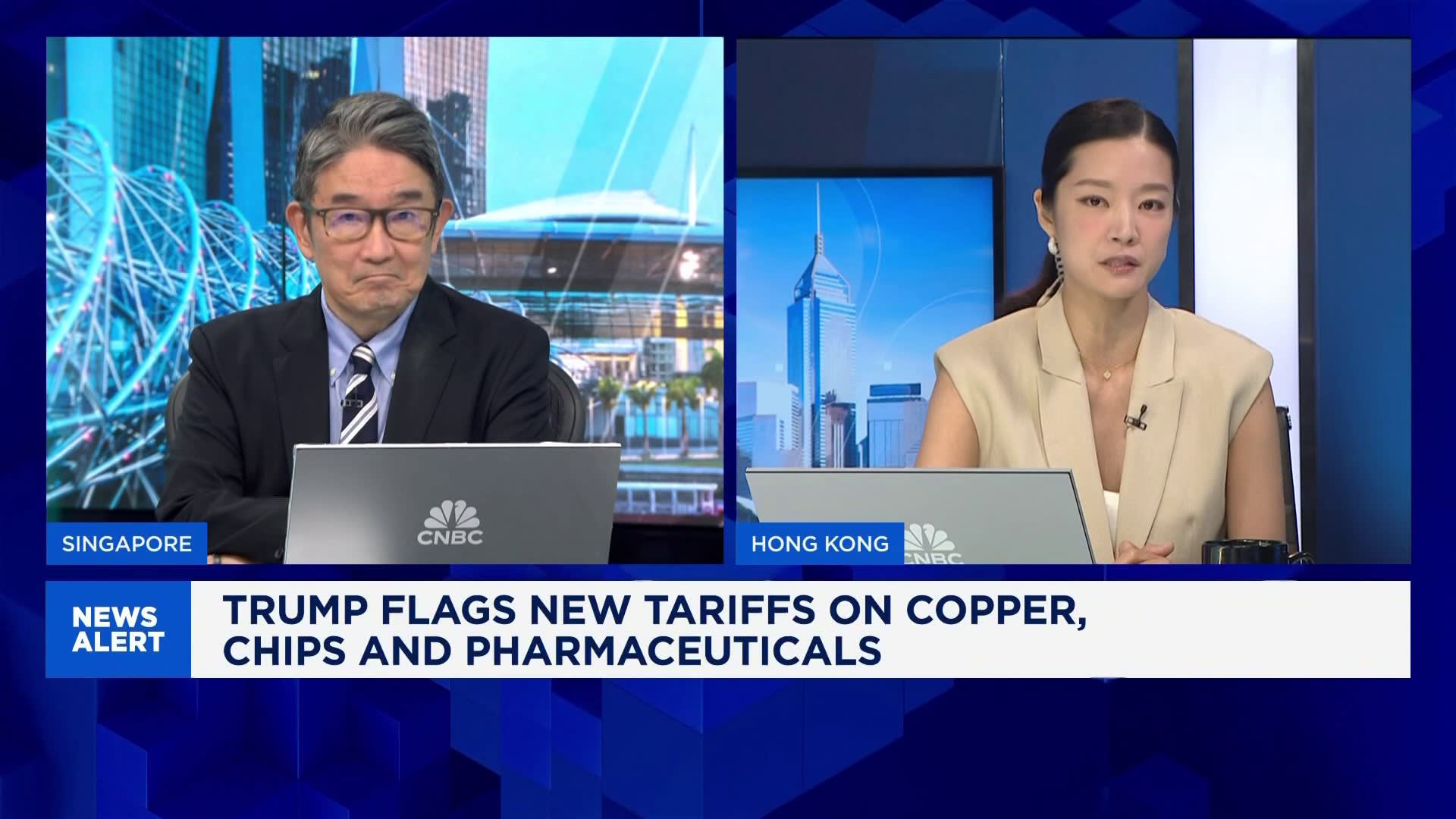Trump Threatens New Tariffs on Key Industries, Impact Unclear

Former U.S. President Donald Trump has escalated his trade war rhetoric by threatening to impose new tariffs on copper, electronic chips, and pharmaceuticals. This announcement has raised concerns about the potential economic impact on various sectors and who will ultimately bear the cost of these measures. The discussion unfolded during a segment on CNBC’s Squawk Box Asia, featuring insights from hosts Martin Soong and Chery Kang.
Trump’s proposed tariffs could significantly affect the electronics and healthcare industries, which are already navigating supply chain disruptions. The imposition of new tariffs is seen as an attempt to protect American manufacturers but could lead to increased prices for consumers. As trade tensions rise, the question of who will pay for these tariffs looms large.
Economic Implications of Tariff Increases
Analysts are divided on the potential fallout from Trump’s latest threat. Some argue that tariffs could lead to higher production costs, which manufacturers might pass on to consumers. For example, electronic devices that rely on imported semiconductor chips could see prices rise, impacting both retailers and buyers.
The pharmaceutical sector also faces challenges, as many drugs are produced using imported materials. Increased tariffs could lead to higher costs for medication, affecting patients and healthcare providers. Chery Kang noted during the broadcast that the ripple effects of such tariffs could be felt globally, particularly in countries that export these materials to the United States.
In the discussion, Martin Soong highlighted the historical context of tariffs in U.S. trade policy, referencing previous administrations’ attempts to protect domestic industries. The effectiveness of these measures remains debatable, with many experts pointing to the long-term consequences of trade wars, such as retaliatory tariffs from other nations.
Retaliation and Global Impact
Countries that export copper, chips, and pharmaceuticals to the U.S. may respond with their own tariffs, further escalating tensions. Economists warn that such actions could lead to a cycle of retaliation that harms global trade. As nations seek to protect their own economic interests, the interconnectedness of the global market means that everyone could feel the impact.
Trump’s trade strategy has faced criticism for its potential to disrupt established supply chains and increase costs for consumers. The ongoing uncertainty surrounding these tariffs has left many businesses unsure about how to plan for the future. Companies in the affected sectors are closely monitoring the situation, preparing for potential price increases and shifts in consumer behavior.
While the exact consequences of Trump’s threats remain to be seen, the discussions on Squawk Box Asia underscored the complexities of international trade and the implications for economies worldwide. As businesses brace for potential changes, the focus will remain on how to navigate the challenges posed by these new tariffs and their broader economic impact.






